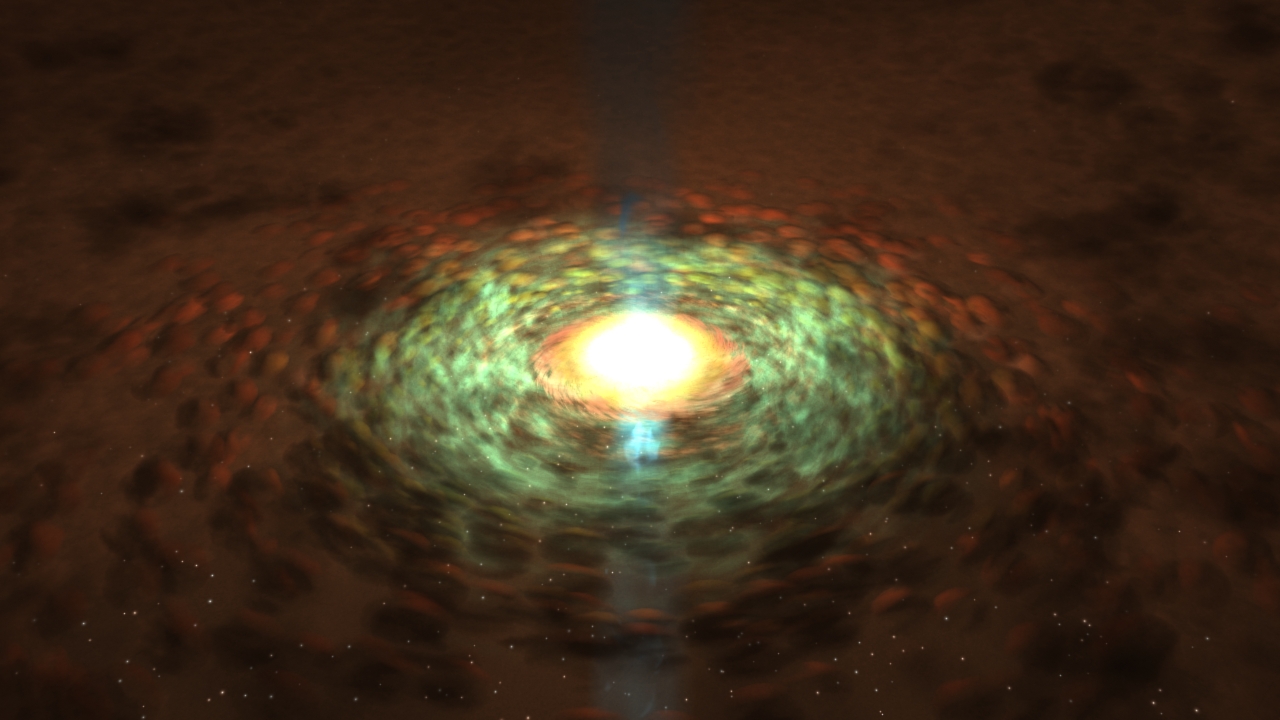Occulting Clouds
At the hearts of most big galaxies, including our own Milky Way, there lurks a supermassive black hole weighing millions to billions of times the sun's mass. As gas falls toward a monster black hole, it gathers into a disk and becomes compressed and heated, ultimately emitting X-rays. In 2014, using data from NASA's Rossi X-ray Timing Explorer satellite, scientists uncovered a dozen instances where X-ray signals from active galaxies dimmed as a result of a cloud of gas moving across our line of sight. Measurements show these clouds vary in shape and size but average 4 billion miles across, or large enough to span the solar system from the sun to beyond Pluto’s orbit. The findings will help explain how gas funnels into the hot accretion disk that feeds a supermassive black hole. Watch the video to see the cloudy structure of an active galaxy's core.

Massive clouds dim the powerful X-rays coming from the centers of some galaxies.
This animation zooms into clouds of gas circling a supermassive black hole.

The number of clouds present at any instant along our line of sight could be determined by looking at changes in X-ray signals.

As the number of clouds increased, the intensity of detected X-rays declined.

Interference from fewer clouds allowed the X-ray intensity to rise.
For More Information
See NASA.gov
Credits
Please give credit for this item to:
NASA's Goddard Space Flight Center
Video courtesy of NASA/GSFC/UNAM/Wolfgang Steffen
Images courtesy of UNAM/Wolfgang Steffen
-
Animators
- Wolfgang Steffen (Instituto de Astronomia, UNAM)
- Scott Wiessinger (USRA)
-
Video editor
- Scott Wiessinger (USRA)
-
Producer
- Scott Wiessinger (USRA)
-
Writer
- Francis Reddy (Syneren Technologies)
Release date
This page was originally published on Tuesday, October 21, 2014.
This page was last updated on Wednesday, May 3, 2023 at 1:50 PM EDT.
